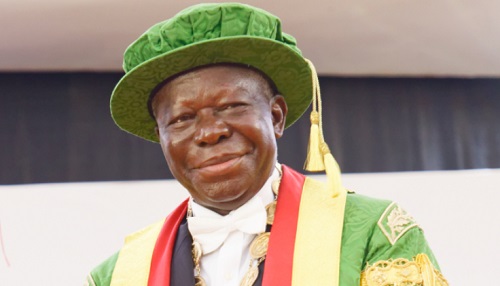The Monetary Policy Committee (MPC) of the Bank of Ghana has increased its monetary policy rate to 30 per cent.
This represents a 0.5 percentage points rise over the previous rate which stood at 29.5 per cent.
Addressing the media at the MPC press conference, Governor of the BoG, Dr Ernest Addison said the increase was due to elevated risks to inflation driven by a rise in food prices.
After declining consistently between January and April, headline inflation increased in May and June on account of a variety of factors, including high food prices, implementation of new tax measures and utility tariff adjustments.
For instance, overall inflation increased from 41.2 per cent in April to 42.2 per cent in May and then further to 42.5 per cent in June. Underlying measures of inflation have all ticked up in May 2023.
More insights
Dr Addison noted that while core inflation ticked up, businesses’ expectations of inflation remain flat at an elevated level.
Although inflation is expected to decline in the near-term, baseline forecasts show a slightly higher elevated profile in the year ahead, which, if not contained, could embed in underlying inflationary pressures.”
The Governor explained that it was important that policy responded appropriately and decisively to prevent those risks from becoming embedded and consequently derail the disinflation process.
He said in the committee’s assessment, risks to the inflation profile were judged to be elevated, driven by second round effects of food prices.
Inflation has persistently hovered around 42 per cent throughout the second quarter of 2023 even though central bank financing has been eliminated in the first six months of the year.
“Ghana’s macroeconomic framework requires decisive tightening from both the fiscal and monetary side to anchor inflation expectations firmly on a declining path,” Dr Addison further noted.
The policy rate, which is of keen interest to businesses, signals the rate at which the central bank will lend to commercial banks.
It also subsequently influences average lending rates on loans to individuals and businesses.
Coming on the back of high interest rates the new policy rate is expected to ruffle the feathers of businesses which are already grappling with harsh economic conditions, including interest rates above 36 per cent on average, a development which is fast making them uncompetitive as compared to their counterparts in other parts of the continent.
Real sector conditions
Despite the economic difficulties, real sector conditions improved somewhat with higher gross domestic product (GDP) growth recorded in the first half year.
The Governor referred to the Composite Index of Economic Activity (CIEA) in May and said that also showed some gradual recovery, though the Index remained in negative territory.
Results from the confidence surveys showed some slight softening in consumer sentiments, while business sentiments remained broadly stable.
Real private sector credit has come under pressure on the back of tighter lending conditions, banks’ impaired balance sheets, elevated credit risk and observed slowdown in credit demand due to the lingering effects of the macroeconomic downturn from last year.
SOURCE: GraphicOnline






